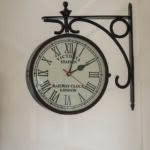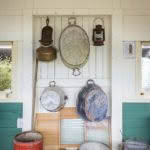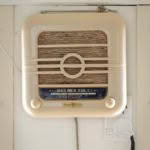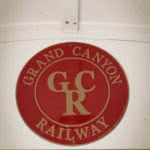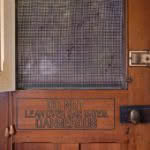A train carriage that sits upon a Waiheke Island hill is the product of childhood dreams
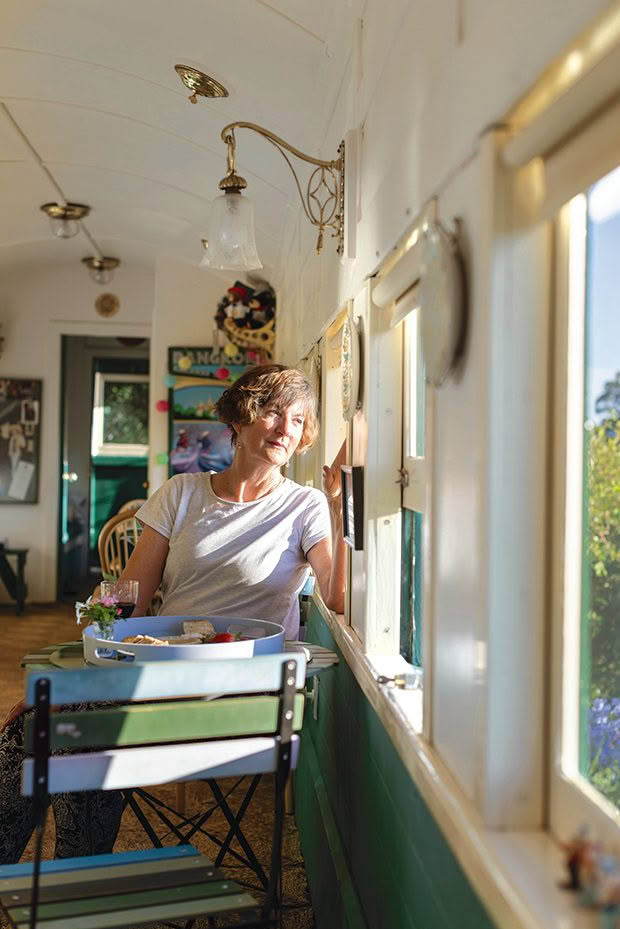
An old railway carriage, named Primrose because of the flower’s association with love, renewal and optimism, has found a new home on a hillside overlooking the sea.
Words: Jane Warwick Photos: Tessa Chrisp
As Mr and Mrs Young drove their rowdy brood of 10 through rural Taranaki to church in Pungarehu (where, quite literally God-willing, they would have at least an hour’s relative silence), Margaret, child No.4 (thanks to beating her twin into the world) would be looking out for her own little perceived slice of eternal bliss.
Poured into the car’s back seat in a pre-seatbelt tangle of limbs and mischief, a bassinet seemingly always poking her in the ribs, Margaret kept watch for a favourite landmark.
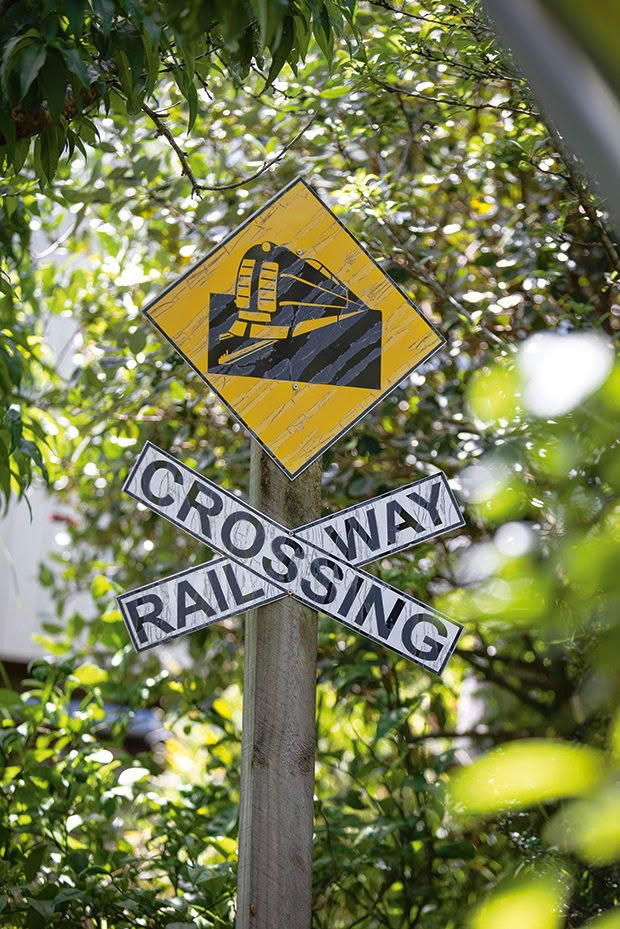
It’s useful to have talented friends; one such creative made the Railway Crossing sign (above) after visiting Primrose, Kevin and Margaret O’Meara’s train carriage-cum-home on Waihehe Island.
And look! There it was. A solitary tram in the middle of a field; alone but not lonely, quiet but not mute. It whispered volumes to Margaret as the ideal retreat, the perfect, uncluttered, bassinet-free bolthole, pummelled only by the murmurs of nature. One day, vowed Margaret as she made her Sunday eye contact with the dilapidated tram, I am going to have a quiet carriage to live in, on a hillside, overlooking the sea.
Margaret left home to be a teacher. She married Kevin and became Mrs O’Meara. She had two children. She got sick. Although she bounced back, there’s nothing like two anxious little faces looking up at you when you’re seriously ill to make you re-evaluate your life and turn “I wish” into “I will”, and so Margaret started a determined search for the railway carriage she’d always promised herself. She decided such a carriage would be called Primrose, an inadvertent portent, perhaps, as in the language of flowers, primroses stand for love, renewal and optimism.
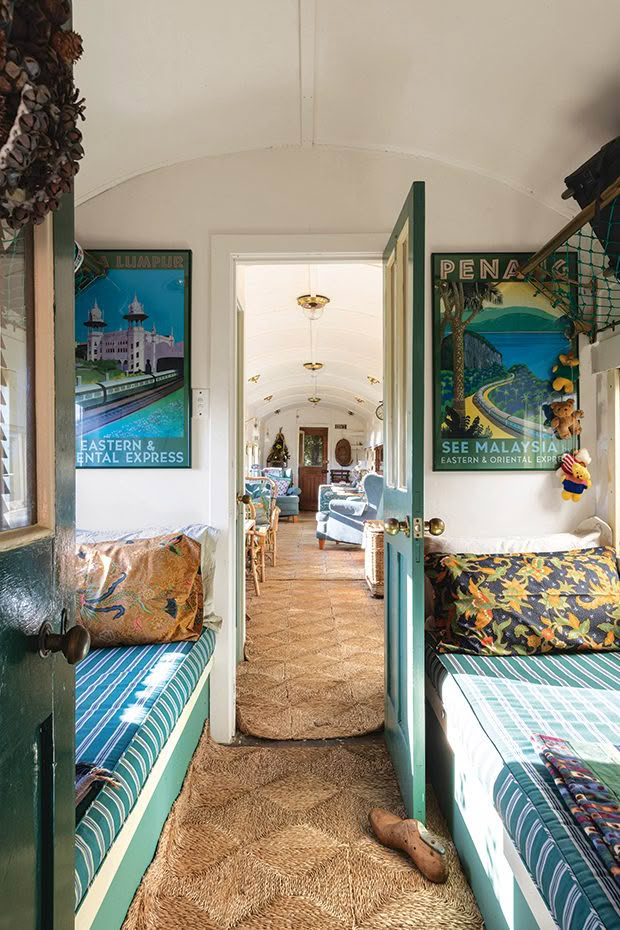
Margaret belongs to the Railway Enthusiasts Society, and her many train excursions include the TranzAlpine, the Trans-Siberian Express, the Eastern & Oriental Express, the Coastal Classic from Anchorage in Alaska to Homer, the Toy Train to Darjeeling, and the Metrorail Western Cape in South Africa to name a few. Posters from two trips below.
She searched here and there for three years, driving all over the North Island prowling around train yards looking for the elusive Primrose. Her mother-in-law, Betty, often accompanied her, ostensibly to protect Margaret from the perceived roguishness of railway workers.
Together they saw plenty of options, although “options” seemed at times very loosely attributed. Margaret wanted wood. She wanted wrought iron, beautiful windows and near-perfect condition, with minimal renovation and maintenance needed. And then, there it was — in fact, two — that matched her needs in the Frankton Railyard, Hamilton.
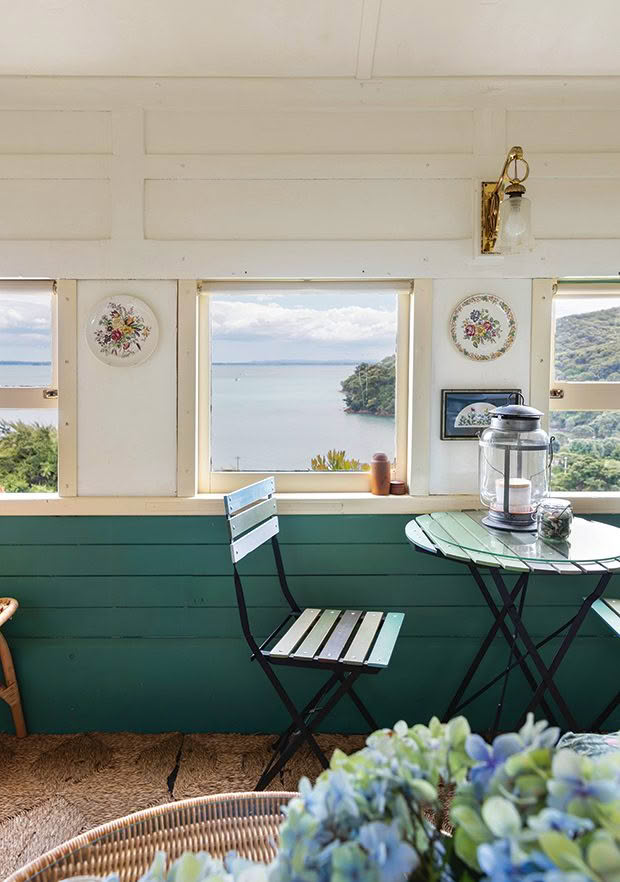
A big bonus to living in a 52-foot-long (15 metres) and eight-foot-wide (2.4 metres) railway carriage is that there are lots of windows. A big bonus to living in a railway carriage on a hillside is that every window has a view.
One was fairly reasonable; the other, used as a workshop, looked decidedly bleak. Someone already had an option on both, but Margaret managed to track him down, and although he wasn’t interested in a sale, she left her number in case he changed his mind.
Nearly a year later, he rang. “Ah, well,” thought Margaret as she ripped up her list of must-haves, signed a cheque for a battered ex-workshop carriage and smiled brightly through her mother-in-law’s astonishment.
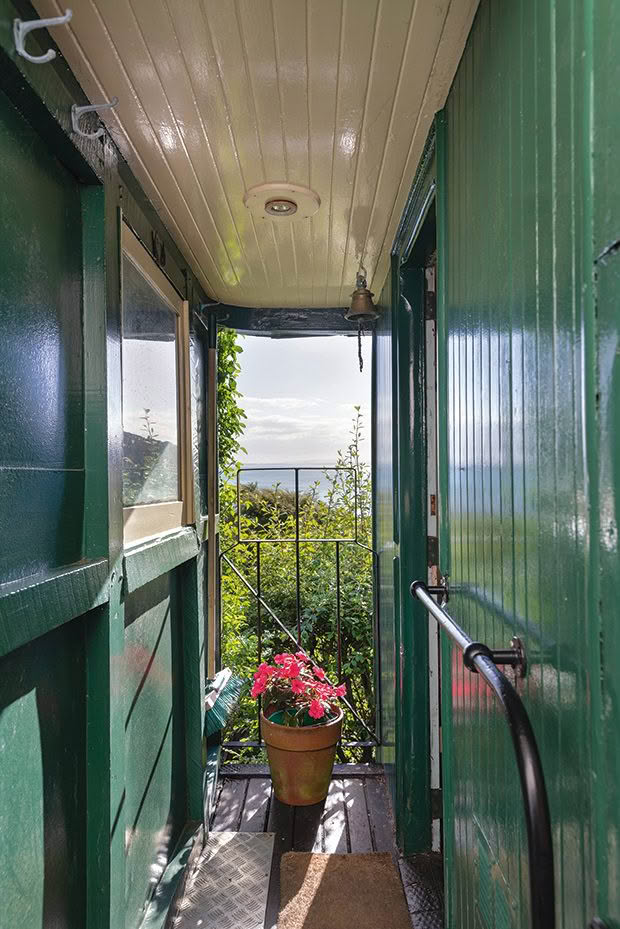
The Frankton Railyard clickety-clacked the carriage to the Ōtāhuhu (Auckland) siding, where it sat until someone rang to say how delighted local vandals had been by that row of tempting carriage windows. Perhaps Margaret needed to come and pick up what was left?
In the early days of Margaret’s quest, her friend Howard had a farm in the Makarau Valley (North Auckland) and said — perhaps he thought jokingly — that if she ever actually got around to buying her carriage, she could park it on his farm down by the chicken sheds. This is a lesson in being careful about what you say because Howard’s chickens indeed came home to roost — along with Margaret’s wagon.
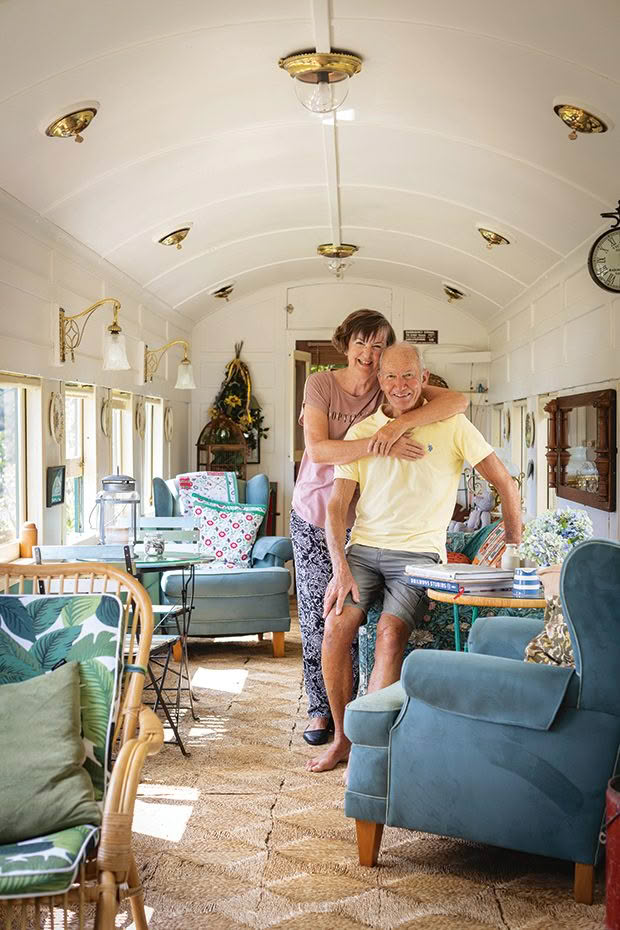
A big bonus to living in a 52-foot-long (15 metres) and eight-foot-wide (2.4 metres) railway carriage is that there are lots of windows. A big bonus to living in a railway carriage on a hillside is that every window has a view.
Margaret and Kevin found someone from nearby Helensville who could make them some railway tracks and deliver them to the farm to rest the carriage’s wheelsets on. They arranged a large truck to transport the carriage from Ōtāhuhu, and in 1991, on the wettest Queen’s Birthday on record, they headed for the farm. It wasn’t easy. The truck wouldn’t fit through the farm gates, which had to be dismantled. The wild weather made the ground slippery, and en route to the site, the truck slid off the track and continued to slide downhill. Luckily, their new next-door neighbour, Ross, had brought over his bulldozer and managed to stop the slide. Unfortunately, he could only do so by slamming the dozer’s forks into the side of the carriage.
“I do hope you took out insurance for the move?” he asked Margaret.
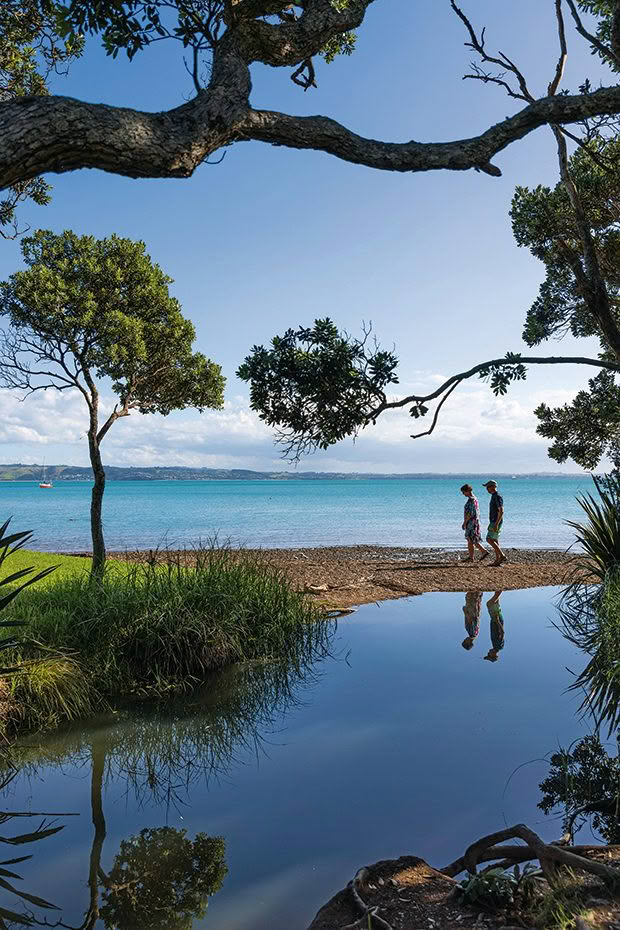
“Hmmm,” she replied with just the tiniest of winces, stroking the seven-month baby bump of her third child and crossing her fingers behind her back. Other logistical problems that day included planks, low loaders, ropes, a stuck bulldozer, a stuck truck, and tools downed (at last) at 8pm, but finally, Primrose was settled into her new home.
And so the great renovation began, and it was a family affair. By August, the bump at the front had become Freya in the backpack, and the two elder children, Shaun (then 16) and Simone (then nine) had become adept builder’s mates. Because the carriage had been a mobile workshop, it also had four bunks at one end and a kitchen at the other. The floor was rotten, and a lot of debris was lying around. “The roof leaked, pieces were missing from the ceiling, and the paint was dropping off in sheets,” remembers Margaret. “But I could see the potential.”
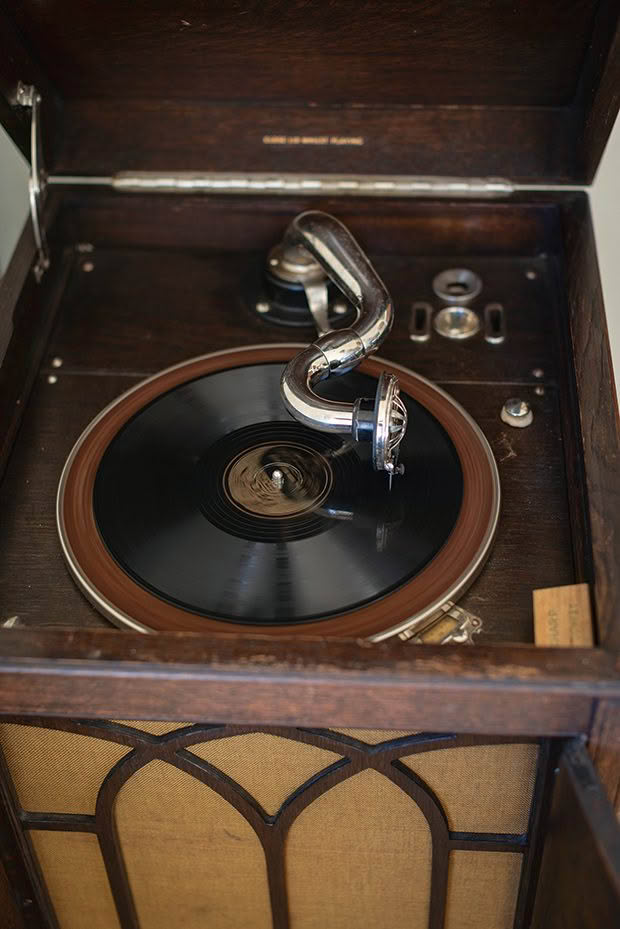
The gramophone is a great favourite at parties. Kevin and Margaret have about 100 records for the machine, with another 300 they can borrow.
Freya supervised in that cheerfully kooky way peculiar to infants while Shaun and Simone stoically dusted, sanded, painted and pulled out old nails.
Simone, in particular, developed impressive carpentry skills, so it is probably little wonder that now grown up, she is a project manager for house restorations.
The carriage wasn’t on a hillside overlooking the sea, but at least Margaret finally had it.
- Kevin was motorcycling through Old Delhi in India when he spied a shop dealing in railway memorabilia. The clock (below) was begging to be bought, so of course, it came home with him.
- Margaret is keen on Kiwiana, and after some locals saw her collection, they offered her the washboards.
- The Bakelite radio was the first wall radio bought by Kevin’s parents — it fits the period and is perfect for Primrose.
They painted Primrose in forest green with a buttermilk trim after first pranking the horrified neighbours that the garish turquoise undercoat was actually the finished product.
For three years, they regularly commuted to the wee retreat from the North Shore, where Kevin had his veterinary practice. Freya took her first steps across its narrow width.
Then Howard sold the farm, and although he did so on the proviso the new owner allowed them to stay for another year; within two months, they were told to go.
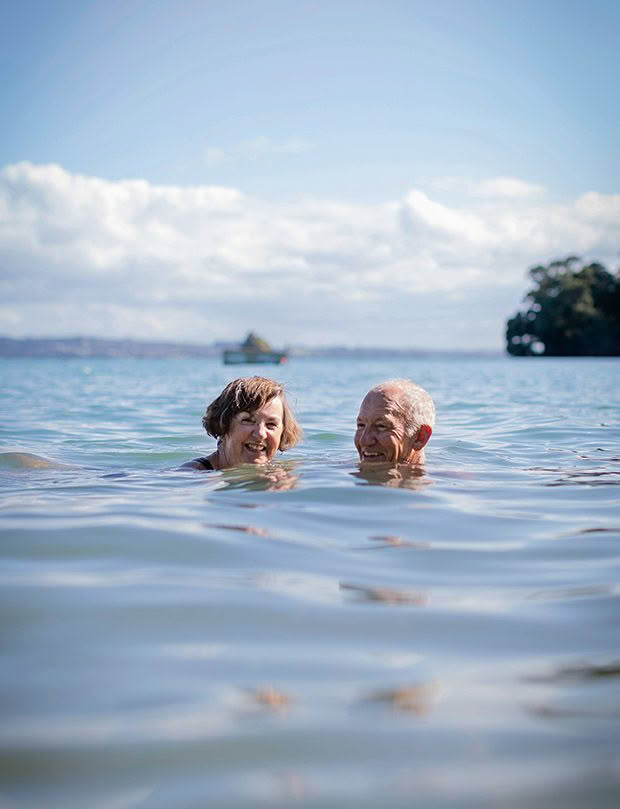
This time, the shift was almost flawless. “It was like watching a ballet. The cranes so smoothly swinging Primrose neatly onto her new site,” remembers Margaret. “We had bought an empty section on Whangaparāoa Peninsula a few years before as an investment, and this is where we took Primrose when we had to move quickly.”
It still wasn’t on a hillside overlooking the sea, but they were getting closer. But it wasn’t to last. Over the years, while the section was empty, with Kevin keeping it trimmed and tidy, the space had become thought of as a reserve and locals had treated it that way, not least because there was a public accessway down one of its boundaries to the Peter Snell Youth Village.
When Primrose arrived, the neighbours were astounded, and some were very less than welcoming. There was a flurry of concerned and sometimes irate calls to the council, which confirmed that the site was, in fact, privately owned and there was no reason why Primrose could not reside there. She was tidy, low-lying and didn’t take up much room. Nevertheless, after one neighbour threatened to burn her down, Margaret, hugely embarrassed, decided that perhaps that wasn’t the neighbourhood that a girl like Primrose deserved.
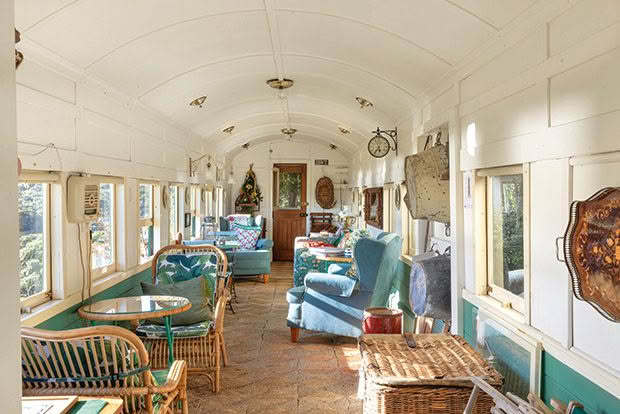
Waiheke Island had always been a favourite place for the O’Meara clan, and Kevin’s family had had a bach there since the 1920s. Luck was quickly on their side, and a section came up for sale — peaceful, on a hillside overlooking the sea.
They met the neighbours, who were happy to live next door to a carriage named Primrose. There was that thing with the cranes again and some perplexing bureaucratic knots that put knots in their stomachs, but at last, Primrose is where she was always meant to be — on a hillside overlooking the sea. It is such a perfect spot, Margaret can still hardly believe it, not least because it took two years to convince the then Auckland City Council that it was okay to put a carriage on a hill.
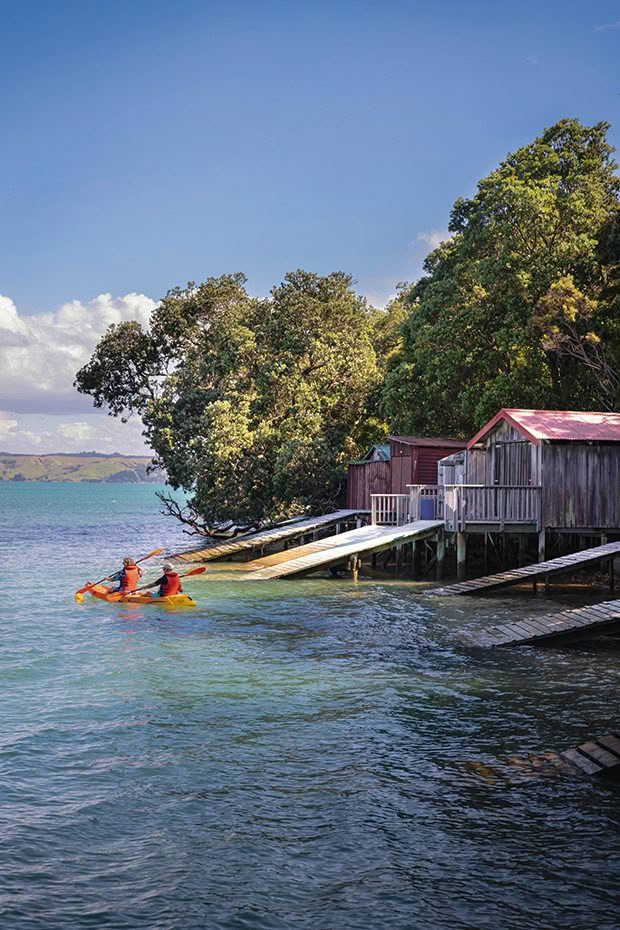
Fitness is taken care of with a steep access path from the local bay to the carriage, and Margaret and Kevin spend plenty of time in the water (swimming), on the water (paddling on their kayaks) and beside the water (long strolls along the shoreline).
“No matter what we came up with, the council always had something more to say, not least that poor Primrose was ‘unsightly’,” remembers Margaret. “So we drew a line of pittosporum across the plan in front of the carriage,” she laughs. “But at last, we found a council person who understood. A few firm words and instructions from them, and we were good to go.”
And go they have — at every opportunity. They have had some good parties, dancing to music cranking out from an old gramophone. The Art Deco Society had an afternoon tea on board, and a bride and her attendants prepared for her wedding there. In some ways, Primrose is a forerunner for the tiny home movement, small with a big heart and walls that make an effort. And within those walls is everything the young Margaret hoped for and imagined all those years ago on the way to Pungarehu.
PRIMROSE’S PASSAGE
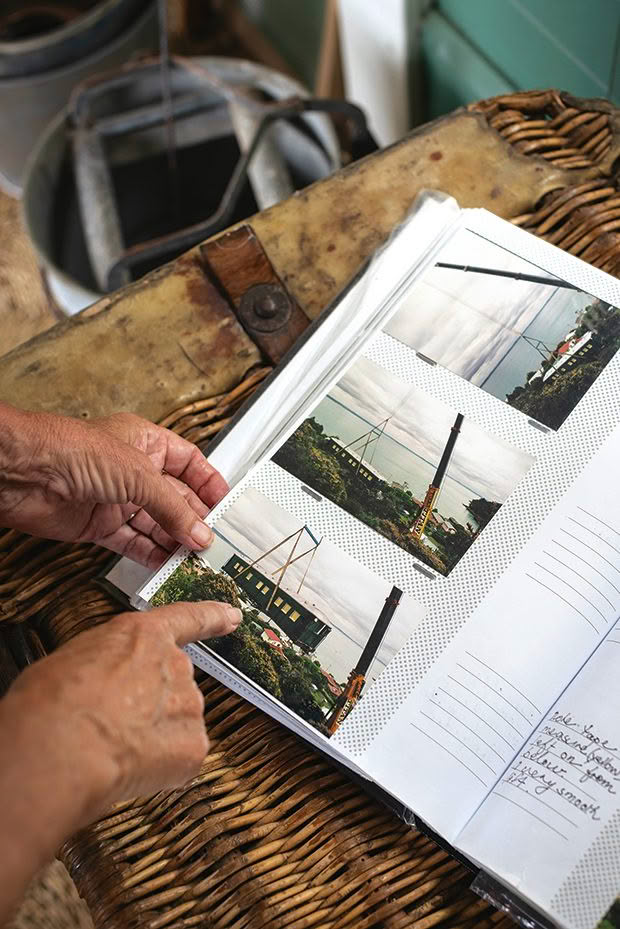
It was a good thing Kevin cut his project managing teeth on 24-tonne Primrose’s previous two sites because the Waiheke move was a bit fraught. It began on the drive to Half Moon Bay (east Auckland) to catch the vehicular ferry across the Hauraki Gulf. The transporter driver underestimated the height of his load, hit the pedestrian overbridge in Downtown, and Primrose received a serious dent to her forehead.
Meanwhile, Kevin and Margaret had arrived at the new site much later than they intended, expecting to find a nicely bulldozed and levelled setting for the Primrose-placing crane, only to find a pile of dirt. The invention of the telephone seemed to have bypassed anyone who could help, so they could do nothing but wait until morning.
At 2am, sleepless and restless, Kevin wandered across the site to discover the hole for the new septic tanks had caved in. Digging the dirt out again helped pass the remaining wee hours. Not long after, the contractor came to level off the base for the crane. He was astonished at Kevin and Margaret’s anxiety; after all, he said, he knew the platform had to be crane-ready. So, of course, it would be.
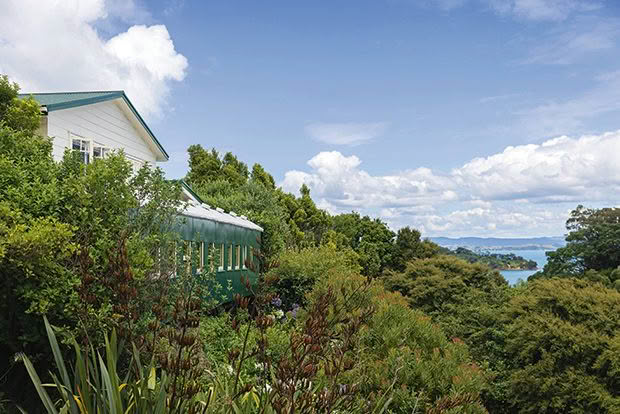
The green roof behind the carriage belongs to a one-room building Kevin and Margaret have dubbed The Station. It provides them with space for cooking and dining and spreading out when the weather is bad. The carriage is used as an extra lounge and has two single beds for guests.
Meanwhile, the slightly battered and giddy Primrose had arrived on the island, the combined bulk of her and her transporter taking up the whole road. Between them, they were too wide and cumbersome to negotiate one of the island’s few roundabouts, so the contractors simply pulled out all road signage, and Primrose sailed regally across the intersection while the workers replaced the signs in her wake. In the meantime, at the site, Kevin and Margaret, to their astonishment, saw a local bus pass by, despite Kevin obtaining permission for the road to be temporarily closed. There was another flurry of phone calls — these answered — to the appropriate office, where it was quickly established that communication between desks was not a strength. But, in the end, it all went well; the tracks were hoisted, and so was Primrose, settling firmly into her forever home.
Love this story? Subscribe now!
 This article first appeared in NZ Life & Leisure Magazine.
This article first appeared in NZ Life & Leisure Magazine.
